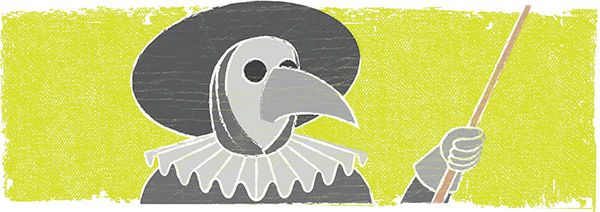Tape Is Not PPE
From the Editors

Have you ever tried to tape gloves to a chemical suit or a respirator to a hood? If you use gloves or respirators, the answer is probably “yes.” It can be like trying to tape to an English muffin: lots of nooks and crannies.
Tape is designed to hold items in place, not to serve as personal protective equipment (PPE). There is permeation data available for some types of tape, but their adhesives may be compromised by the chemical hazards present. In addition, it is nearly impossible to use tape to seal all of the folds and creases present on gloves, sleeves and hood interfaces. Smooth and positive attachment with tape is difficult, if not impossible.
Instead of tape as PPE, consider these four solutions:
- Using a detachable glove ring assembly for securing gloves to chemical protective suit sleeves
- Using chemical protective garments with respirator-fit hoods or SCBA face piece interface hood
- Using garments (level B) with attached gloves
- Using garments with encapsulated hoods and attached gloves (level A or B encapsulating garments)
The detachable glove ring assembly and respirator-fit hood solutions may require tape, but much less of it. And the tape used is more in line with its intended purpose of holding things in place, not providing a chemical barrier. Options 3 and 4 eliminate the need for a taped suit interface completely.
Details for these options are available on the DuPont™ SafeSPEC™ website at SafeSPEC.DuPont.com
Hazmat Through History: Plague Doctors
By Daniel Hammel
DuPont Personal Protection Inside Sales Manager

Our first look back at “Hazmat through History” brings us to 17th century Europe during an outbreak of the bubonic plague. During epidemics, towns would hire plague doctors to treat plague victims. While these doctors attended sufferers from all social classes, they often were poorly trained and some would charge extra for dubious treatments.
In 1619, the French medical doctor Charles de Lorme developed a protective garment for plague doctors. Some of the garment’s features were functional in nature, but superstition also influenced the design.
The garment’s most prominent feature was its bird-like mask. The mask’s function was to ward off “bad air,” which was thought to be one of the causes of the plague. The mask’s beak area was stuffed with dried flowers, spices and other aromatic substances.
Plague doctors wore a black, wide-brimmed hat, signaling their status as physicians. They also wore a neck-to-ankle black overcoat. This garment, like the hat, was made of waxed leather, and also contained fragrant items to help ward off bad air. Gloves, leggings and boots rounded out this waxed-leather protection.
Plague doctors carried a wooden cane that served several purposes. It could be used to keep people away and allowed doctors to examine patients without touching them. Sometimes it was used to strike patients as a means of repentance—since many believed the plague was a punishment for past sins.
Fortunately, we’ve come a long way in our personal protection practices in the past 400 years.
Hazmat “Connections”
By Rick Edinger
Deputy Chief – Emergency Operations
Chesterfield Fire & EMS, Chesterfield County, Virginia

As a relatively new hazardous materials responder, you’ve taken the required certifying courses and received some additional training. What do you do now? One important step is to stay connected with the industry and other hazmat responders.
There are several ways to do so. First, you can make a point of reviewing the many hazmat-related publications and websites that offer information and training for responders. One great example is the National Hazardous Materials Fusion Center, which offers an array of training resources and information on industry trends.
Another great way to stay in tune is to attend hazardous materials training conferences. There are many held in the United States and abroad, both large and small, and they provide excellent training and networking opportunities. As with most training, the informal discussions you’ll have at these events are often as valuable as the formal training.
It’s important to stay connected as a hazmat responder. Our industry changes quickly, and it’s up to you to remain current and ensure that you and your team are safe and effective during responses.
Conferences:
www.iafc.org/hazmat
www.hotzone.mobi
www.hazmat.org
The Importance of PPE Inspection
By Barry Lindley
Senior Emergency Response Specialist, Specialized Professional Services, Inc.

Do you inspect and pressure test your suits according to the manufacturer’s recommendations? We do. A while back, we had an anhydrous ammonia response to a local facility as a mutual aid call. There was a significant leak at the bottom of the tank, requiring Level A suits. Per our standard, our responders inspected their suits before donning. We’d inspected and pressure tested the suits in December, and the incident occurred in February—just two months later. As one of our responders inspected his suit, he noticed a small area around the face piece that appeared loose. When he pulled the tab, the whole face piece delaminated from the suit. If he hadn’t inspected his PPE, he would have been in the hot zone when the delamination occurred.
Routine inspections and pressure tests help ensure that your PPE will be functional when you need it to be.

Resource library
Find technical information, videos, webinars and case studies about DuPont PPE here.


